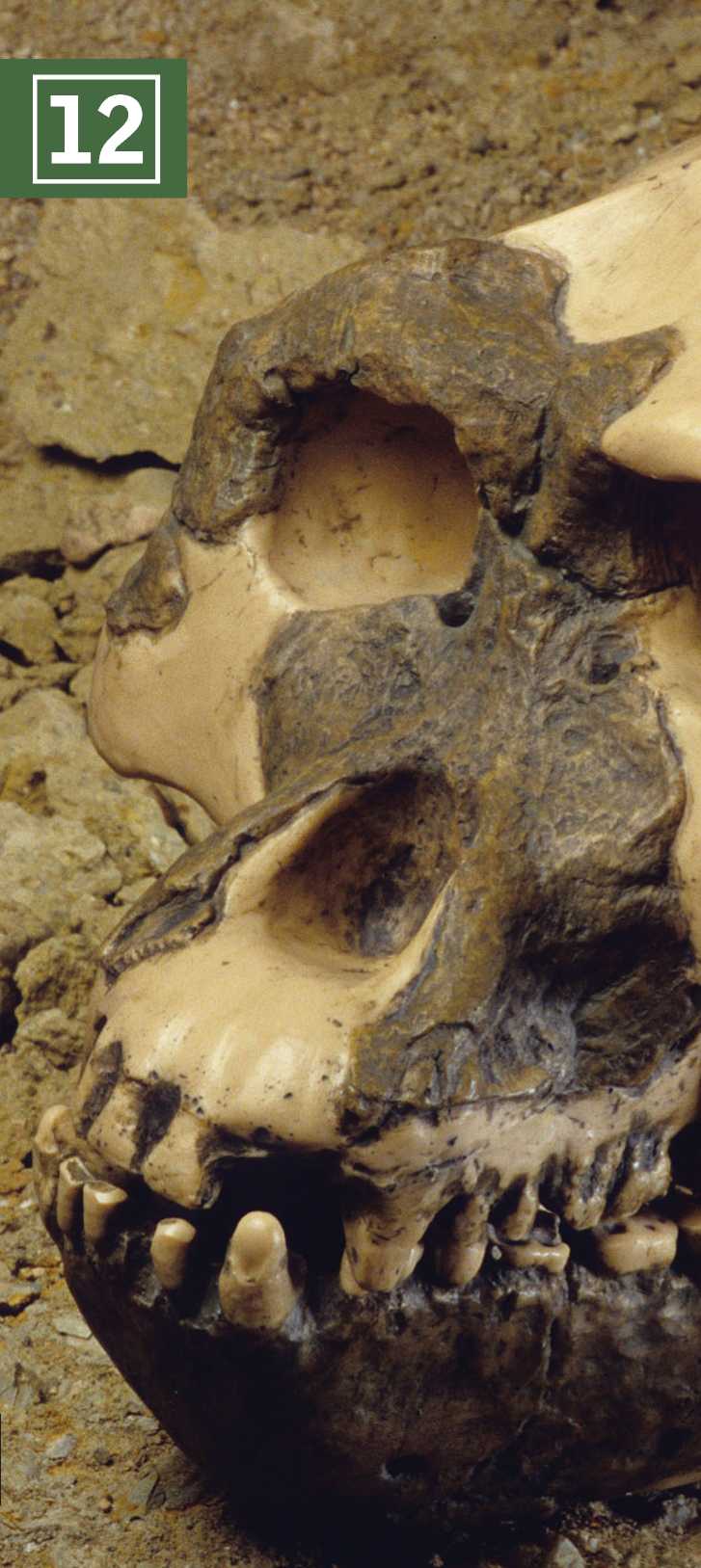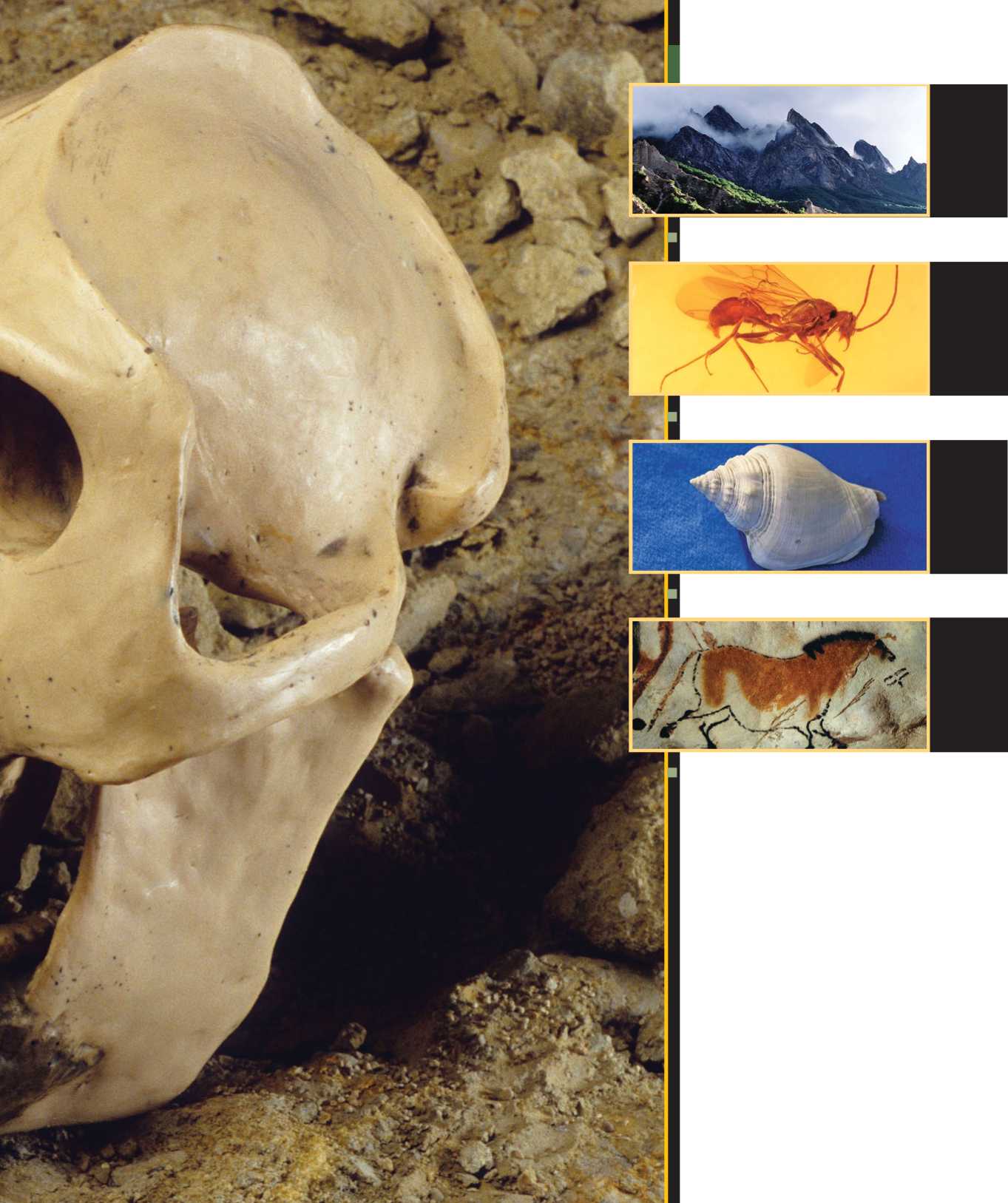He chapter of Earth history that brings us to the present is the Cenozoic Era. This time interval, 65.5 million years in duration, amounts to 12% of the Phanerozoic Eon and only 1.4% of time since Earth’s beginning. The word Cenozoic means “new life,” and it alludes to the increasingly modern appearance of the era’s life forms. Among those modern life forms are fossils of hominids, our own closest relatives. Hominids, represented by this skull of an australopithecine, make their first appearance on the pages of Earth’s history book at the very end of the very last chapter, less than 7 million years ago.
Following widespread extinction at the end of the Cretaceous Period, the biotic world changed greatly. On land, mammals, birds, flowering plants, and insects became prevalent. In the oceans, mollusks, crustaceans, corals, planktonic foraminifera, calcareous nannofossils, teleost fishes, sharks, and mammals diversified.
Three periods—the Paleogene (from the Greek for “old birth”), Neogene (from the Greek for “new birth”), and Quaternary (referring to the fourth division of geologic time, a carryover from the early 1800s)—comprise the Cenozoic Era. As we approach the present, the number and quality of stratigraphic tools at our disposal increases.
For example, the beginning of the Paleogene Period is marked by the iridium-rich “boundary clay” that was deposited following the Chicxulub impact. Calcareous nannofossils help identify the beginning of the Neogene Period. The point also correlates with the beginning of a normal polarity interval. Finally, the beginning of the Quaternary Period coincides with the onset of major glaciation in the Northern Hemisphere. Sequence stratigraphy and calibration of sedimentary patterns to Milankovitch cycles allow for high-resolution stratigraphic correlation.

CHAPTER OUTLINE

Cenozoic Overview p.370
Paleogene Period p. 376
Neogene Period p.388
Quaternary Period p. 393




 World History
World History









